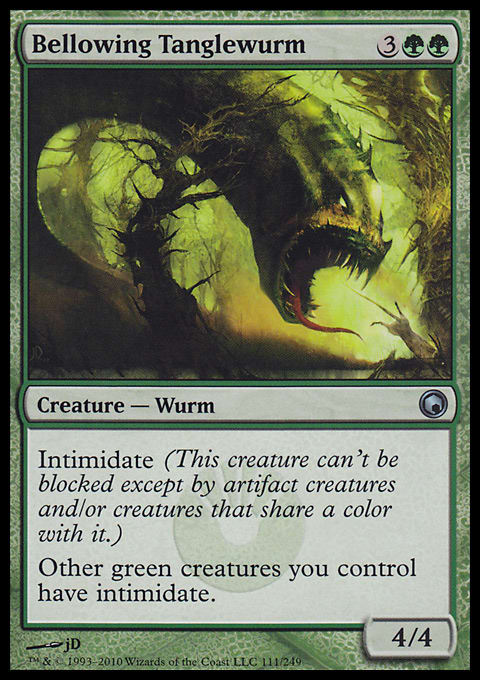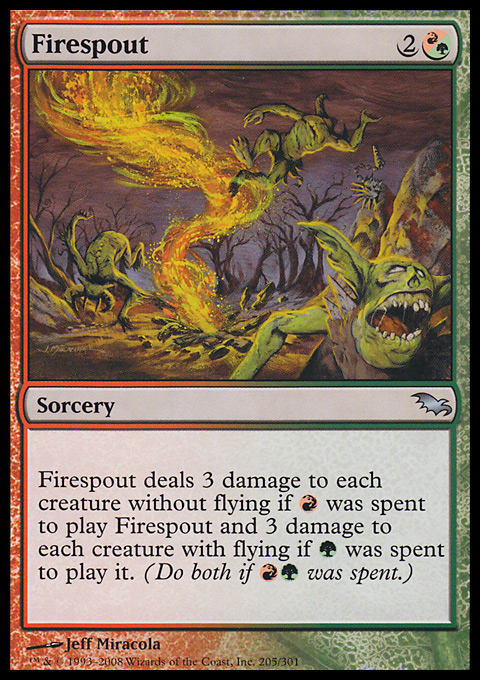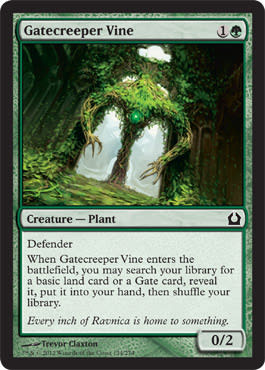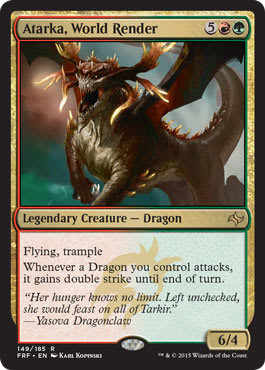Welcome to this new miniseries here on Gathering Magic! Over the next few weeks, Abe Sargent and I are going to help experienced Commander mages learn how to introduce the game to someone who doesn’t play Magic at all. We’re always looking for new players, but it’s tough to teach Commander to the person with no grounding in the game. The very complexity we love can turn off somebody who thinks it’s too hard to learn. There are lots of ways to teach our game, but we start from a couple of particular perspectives:
- The goal of our series is to show how to teach new players so they’ll be excited to play again. It’s less about knowing all the nuance of this really complicated game, and more about having a lot of fun and wanting to do it more. Once the novice is hooked, complexity can follow.
- We’re coming at it based on a Drive to Work Podcast by the grand Pooh-Bah himself, Mark Rosewater.
The gist of Mark’s podcast is this: make the game fun and swingy, not about rules and optimal play. Give the person some cards and play a while with hands showing so decisions can be talked through. Let the new player make choices, even if they’re bad. Most important: Don’t. Worry. About. Winning. Just play a fun game of Magic.
Commander is in many ways more challenging to teach than heads up, 60-card Magic. Our decks often are more complicated, using cards from the whole history of the game, filled with tricks and complicated interactions, and sometimes require a nearly encyclopedic knowledge of the game in order to play well. For the player with zero experience, it can be daunting. Phasing does what? Sorry, what does Shadow mean? So we plan to introduce the game with some simple decks based just on creatures, sorceries and lands, but then promptly graduate with more spells and complicated interactions as the new mage becomes grounded in the basics.
We will build four decks with nothing but creatures and sorceries. Each deck will have different themes and use different colors. That way, you can pick the deck for the new player based on what you think she will like. But each deck will use my Convertible Commander technology of an optionboard, having 20 extra cards to swap in. There will be 6 instants, 6 enchantments, 6 artifacts, and 2 Planeswalkers for each deck, which should be enough to get them to show up after you’re ready to add them in. That way, as the player increases in skill and comfort with the game and rules, you can add more card types, either a piece at a time or more quickly. The new player and the more experienced ones who are playing the other decks can incorporate the new type of card, which gives a good opportunity to discuss the mechanics of the cards and how they fit with the basic deck, as an introduction to deck-building. Each piece is another chance to demonstrate that reading the cards is important and that the interactions they create are fun and beautiful.
Abe and I will each build two of the decks. That creates more variety, plus the guy is an amazing deck-builder and this process deserves that. The rest of the miniseries will introduce the Optionboards and actually follow teaching a new player to play using these decks. Throughout the series, we’ll talk about different strategies of how to teach the new player. To understand the basics, know the decks are intended to be played against one another — bringing other, more complicated decks to the party will make the game unnecessarily challenging for the new player, and the optionboards should be incorporated simultaneously. Also, the first game or two should probably be played with hands open to everyone who’s playing.
All four decks, including Optionboards, will cost a total of no more than $250. The idea is to make them cheap enough that most dedicated Commander players can piece something like them together for when a new player comes into the fold.
So let’s take a look at our first deck. A classic Commander archetype is ramp and smash — get out extra lands and mana, then play giant creatures and attack with them for the win. Some players will get excited about giant numbers in the bottom right corner of their creature cards, so we want to have a deck which lets their eyes get wide when they see a 7/7. Temur (![]()
![]()
![]() ) seems like a good color combination for this, and their original leader, Surrak Dragonclaw, is a nice big smashy general for this pile.
) seems like a good color combination for this, and their original leader, Surrak Dragonclaw, is a nice big smashy general for this pile.
Surrak Dragonclaw ? Commander | Mark Wischkaemper
- Commander (1)
- 1 Surrak Dragonclaw
- Creatures (42)
- 1 Acidic Slime
- 1 Aether Adept
- 1 Atarka, World Render
- 1 Atarka Beastbreaker
- 1 Baloth Woodcrasher
- 1 Beacon Behemoth
- 1 Bellowing Tanglewurm
- 1 Borderland Ranger
- 1 Civic Wayfinder
- 1 Cliffrunner Behemoth
- 1 Coiling Oracle
- 1 Drumhunter
- 1 Dungeon Geists
- 1 Exuberant Firestoker
- 1 Farhaven Elf
- 1 Flametongue Kavu
- 1 Foe-Razer Regent
- 1 Garruk's Horde
- 1 Garruk's Packleader
- 1 Gatecreeper Vine
- 1 Hoverguard Sweepers
- 1 Krosan Tusker
- 1 Molten Primordial
- 1 Mosstodon
- 1 Mulldrifter
- 1 Nevermaker
- 1 Ondu Giant
- 1 Paleoloth
- 1 Phyrexian Ingester
- 1 Rampaging Baloths
- 1 Sagu Mauler
- 1 Sakura-Tribe Elder
- 1 Sea Gate Oracle
- 1 Siege Behemoth
- 1 Soul of the Harvest
- 1 Spearbreaker Behemoth
- 1 Spellbreaker Behemoth
- 1 Sphinx of Uthuun
- 1 Sylvan Ranger
- 1 Terastodon
- 1 Thunderfoot Baloth
- 1 Valley Rannet
- Sorceries (18)
- 1 Arc Lightning
- 1 Arc Trail
- 1 Banefire
- 1 Blaze
- 1 Burn from Within
- 1 Chandra's Revolution
- 1 Crater's Claws
- 1 Devils' Playground
- 1 Explosive Vegetation
- 1 Fanning the Flames
- 1 Farseek
- 1 Firespout
- 1 Ground Assault
- 1 Peregrination
- 1 Red Sun's Zenith
- 1 Seek the Horizon
- 1 Unexpected Results
- 1 Urban Evolution
- Lands (39)
- 18 Forest
- 5 Island
- 6 Mountain
- 1 Contested Cliffs
- 1 Evolving Wilds
- 1 Frontier Bivouac
- 1 Gruul Guildgate
- 1 Izzet Guildgate
- 1 Rugged Highlands
- 1 Simic Guildgate
- 1 Swiftwater Cliffs
- 1 Terramorphic Expanse
- 1 Thornwood Falls
We basically do four things. We ramp, we play big dudes, we draw some cards, and we throw some burn around. That means we can focus our discussion on just those things; the other three players at the table should generally just play without talking too much about what they’re doing, unless asked by the new player. This particular deck gives a great opportunity to explain why ramp is good: after a few turns, the new pilot with this deck will have more lands than everyone else, and can see that jumps her ahead. It also opens the chance to talk about removal strategies and threat assessment. It’s not a huge deal — sometimes she’ll pick the wrong creature to kill and that’s okay — but we can talk about what things to kill and when you might sit on removal.
A few things show up which are a bit more complicated than ideal for early instruction, but that’s going to be the nature of all these decks, just because Commander has such a huge card pool. First, the commander himself has Flash and cannot be countered. For the first several games, I’d just ignore these abilities; if the player asks, I’d tell her not to worry about it for now, and that it will have no effect on the game for the time being. Talk about those abilities when instants are introduced. Second, Bellowing Tanglewurm has a static ability which is important but only affects some of the creatures in the deck, so that’s going to need some monitoring and help to follow. So is the Trample given by the commander, for that matter. Firespout changes what it does based on what colors of mana are used to cast it, though it’s all right there on the card, so hopefully that can be figured out and provide a good read-the-card moment. Gatecreeper Vine is the same, and is a chance to talk about reasons to get either a basic or a comes-into-play-tapped dual land.
Here’s how I’d recommend you start. Hand the novice the deck and explain: we’re going to begin with a round or two with hands visible so everyone knows what everyone has. You start with seven cards in your hand (let them keep any seven with some lands in it) and will draw a new card as soon as it’s your turn. You can play one land per turn, and the land taps for the color it tells you it taps for, which pays the cost in the upper right hand corner of the cards. When the cost is a number, you can tap a land of any color or of no color to pay that number. Once you run out of lands to tap, you can’t play anything else.
Then start playing. Don’t worry about explaining attacking yet, or anything else. Deal with attacking once there are a few creatures on the ‘field, and my recommendation is to let the new player be the first one to attack, even if the other players could have attacked before. (Which means once they play a creature, you’ll have to explain summoning sickness.) Explain the basics of combat — all combat happens at the same time; how blocking occurs; power and toughness; dying. It’s also probably worth talking about specific swingy cards, but only when they hit the table. Atarka, World Render is a powerful card, but it has to be understood, so a brief explanation of how it changes combat is probably a good idea. Otherwise, and this is key, let the new player guide the discussion. Don’t make suggestions about better play. Don’t offer information about specifics she doesn’t ask to know (as an example, if she doesn’t ask about the Evoke cost on Mulldrifter, don’t explain it). Don’t point out “mistakes.” And don’t try too hard to win. The goal is a swingy game where creatures attack and block and there’s excitement about the next card drawn. Say as little as possible to make the game work; you’ll need to explain how Terramorphic Expanse works, of course, but now is not a time to discuss, or even use the words, “card advantage.” Be patient and let the new player go at her own pace.
In part, we want to accommodate the new player’s learning style — maybe she learns by reading the card, or asking for an explanation, or just experimenting to see what happens. If she guides the discussion, she’ll learn what she needs.
Feel free to change out any of the cards in the suggested deck. A beast theme could be more pushed rather than the 5-power-matters theme I leaned into, or Ferocious could be in the front. Try to lean into enter the battlefield abilities and away from static abilities (that’s stuff that works all the time, like on Bellowing Tanglewurm), triggered abilities (when/whenever/if things, like “whenever a creature enters the battlefield” on Soul of the Harvest, except for enter the battlefield abilities), and activated abilities (like Formidable, such as Atarka Beastmaster). You can have a few, but if there are a ton, it’s going to be really hard for the new player to follow. By only having a few, the other players can help remind the new player when the triggers happen or things are affected without overwhelming the new player. Generally, we want creatures which do something when they enter the battlefield and then are just giant creatures and spells which do one thing. Whether a new player is playing this deck, or watching somebody else play it, there should be little confusion about what the cards do, and when it happens.
This 100 card pile only costs $27.94, which barely nibbles at our $250 budget.
Thanks for joining us, and watch for Abe’s article next week! Do you have any strategies you have used to draw new Commander players into our fold? Please share in the comments if you do!



























